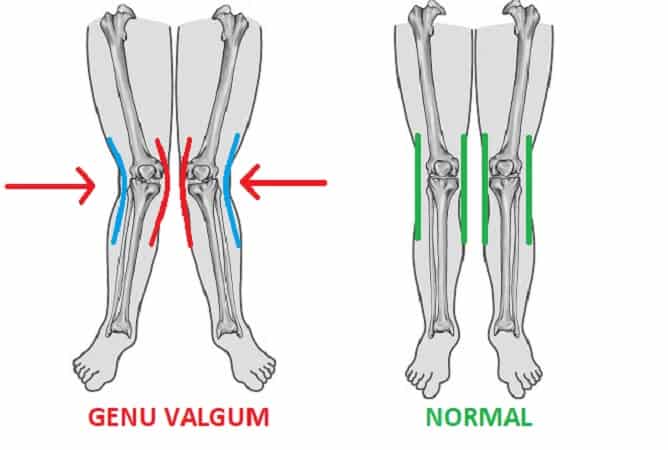Written by Boroondara Osteopathy
A well-known clinic in Melbourne’s eastern suburbs founded by Dr Katie Willy (Osteopath)
Do your knees come too close when you walk? Maybe they even touch? They shouldn’t! Genu Valgum is the technical name for knock knees with the opposite being bow legs or Genu Varum. Many cases of knock knees are put down to genetics and left as such with no hope from the person apart from surgery. After all that’s what nearly every website says, but we disagree. The reason we disagree is due to our deep understanding of human biomechanics and the movement relationship as a chain in the whole body. If you lack movement in one area, there will be a knock-on effect in another area. Knock knees are usually found to be a knock-on effect in our clinic, and something we re-train with movement therapy known as Anatomy in Motion. This podcast with We Move & our educator Gary Ward, can provide you some insight
Our legs go through a natural developmental sequence when we are young, we develop bowlegs from 20-22 months of age. This then straightens out and keeps going past neutral into knocked knees, peaking at 4 years of age and this should all come back to a normal position again by the time we get to 7.
When you notice someone’s knock-knees, we think “…geez they look a bit awkward…”, but even though they look awkward the cause is not often the knees themselves. The knee is forced into that inward position because something further up or down (possibly the hip or ankle) has displaced the normal knee mechanics causing them to bend inwards.
Instead of being evenly spread through all the joints of the lower body, we might be avoiding putting pressure through an old hip injury or surgery (even childhood hernia operations), or an uncomfortable or previously injured ankle.
The knee is the one that buckles to accommodate the load.
The knee closes on the outer side and forces the joint open on the inner side, being pushed closer towards the other knee.

If someone has, for example, hurt their hip or sprained an ankle especially when they were younger (see our blog on “Why your posture is not your fault” by Dr Katie Willy), this can mechanically change the orientation of the knee. As shown by those research studies mentioned below, if there’s something not comfortable with the hip then we need to alter where our force goes through, and the inside of the knee seems to be a common scenario to open up. The good thing is we know with some tailored awareness and movement practice we can re-train the joints to work together with the rest of the body. This is what we see in clinic and in our own bodies.
Studies have found that children who have had corrective surgery for shallow angled hips have ended up with knock knees afterwards. The same was found to happen with older people having hip replacements.
This tells us that by changing the composition of the hips, more force was pushed onto the outer side of the knee, forcing an inwards movement. It wasn’t the knee’s fault!
This also tells us that when we can get the hip working more appropriately, the reverse should be true and the pressure on the knee might even out.
With the knees having to succumb to the loads placed on them, they are a mechanical strategy because somewhere another joint is not moving enough or moving too much. It’s through investigating the joints that we unlock the reasons for the knock knees, and then re-train the root cause rather than focusing on the knee.
We love working with people with knock knees. There is great potential for changing the movement pattern of the knee!
We can teach you about why your knees found this angle and the reasons behind it.
Our Osteopaths are AiM (Anatomy in Motion) practitioners, looking at the whole joint system of the body to find out what the root cause of joint dysfunction, like the knee. It’s only when someone asks about your entire history that the reasons become clear.
Call today on 9859 5059 or book online below.